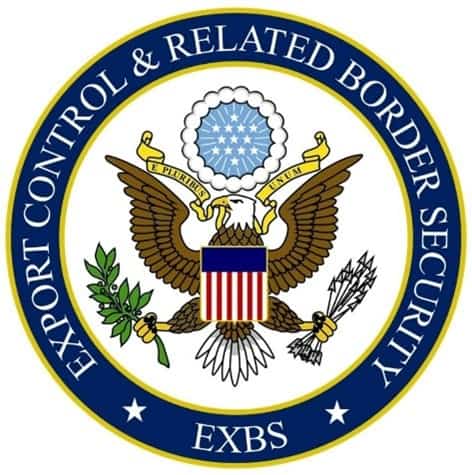Government Sector
Safeguard the Homeland and assist our international partners

Experience and Services
S3 has experience working with State and Local Governments and specializes in working with critical infrastructure partners to ensure they can ensure operational continuity of services, safeguard their personnel, safeguard their critical equipment, and are able to ensure expedited post-emergency recovery in the communities they serve.
In addition to working with State and Local Governments, S3 has worked extensively within the Department of State’s Export and Related Border Security Program (ExBS) to help prevent the proliferation of weapons of mass destruction (WMD) and destabilizing accumulations and irresponsible transfers of conventional weapons. Our team has worked with foreign governments from the highest levels for policy and national-level planning and response to providing training to foreign law enforcement personnel and agencies at the borders and on the ground.
Fortress Your Future: Cybersecurity Reimagined
Government organizations, from local municipalities to federal agencies, manage critical data and infrastructure, making them prime targets for cyberattacks. With the increasing digitization of public services and sensitive data storage, governments face a rising threat from nation-state actors, hacktivists, and cybercriminals who seek to disrupt operations, steal classified information, or exploit weaknesses in IT infrastructure.
Our risk assessments identify vulnerabilities within government networks, databases, and communication systems, enabling us to prioritize the most critical areas in need of protection. We enable programs, tools, and teams to detect weaknesses before they can be exploited.
We work within the frameworks of key regulatory standards such as the Federal Information Security Modernization Act (FISMA) and National Institute of Standards and Technology (NIST) SP 800-53 guidelines to help government entities meet cybersecurity compliance requirements. Additionally, we have extensive experience in FedRAMP and StateRAMP frameworks to recommend adequate security controls to align with your commercial partner providers.
Through customized programs and advisory services, we equip government organizations with the tools and strategies to enhance their cybersecurity posture while maintaining the integrity of their systems. By focusing on risk mitigation and compliance, we enable government entities to secure their operations and safeguard sensitive public data from evolving cyber threats.
Capacity Building & Training
S3 is a valued implementation partner to the Department of State’s Bureau of International Security and Nonproliferation under the EXBS program. We provide a wide range of technical assistance, from training workshops on detection equipment to specialized training for border control and, enforcement agencies. S3 has been involved in national-level border security assistance and training programs in strategic regions across the world, including border security forces in the Middle East and national aviation authorities in SE Asia.
Our capabilities and services include:
- Development and validation of national-level response plans for the theft and/or sabotage of radiological material
- Training in countering the smuggling of destabilizing and illegal conventional weapons.
- Development and review of national aviation security policies and plans
- Border interdiction
- Human tracking
- Related border and port security training programs
Nuclear nonprolifereration program support
Develop and implement training programs that help build and sustain our international partner’s capacity to interdict the smuggling of nuclear materials and technology and other illicit and illegal WMD materials. This type of assistance helps key partners meet their obligations and commitments under important U.S. and international initiatives, including UN Security Council Resolution 1540.
- Development and validation of national-level response plans for the theft and/or sabotage of radiological material
- Training programs for agencies or forces responsible for border and port security, detection, and interdiction of smuggling of radiologic materials
- Threat and vulnerability assessment at the facility level of government and private sector organizations responsible for radiological material (e.g., medical and industrial use)
- Other development and training related to nonproliferation and counter-WMD activities and capabilities
DBT-The Foundation of Security by Design
- Bottom line: Know what you’re protecting against.
- By gathering relevant threat assessment information from trusted sources, a clear picture of the adversary’s attributes and capabilities can be documented.
- The DBT is the threat against which an asset must be protected and upon which the protective system’s design is based. It is the baseline threat that facilities and other high-consequence assets are designed to withstand. The DBT includes the characteristics, attributes, and tactics of outsiders and insiders that could be used against the asset. Furthermore, a DBT is derived from credible intelligence information and other relevant threat data and is updated annually.
Threat and Vulnerability Analysis
- The VISA Methodology is one of the many VA tools that can use a specified DBT to determine the overall system effectiveness of an integrated PPS (Physical Protection System). VISA looks at the functions of Detection, Assessment, Delay, and Response to baseline the PPS to make informed, risk-based decisions and determine cost-effective upgrades. VISA is a methodology relying on SME input to help determine overall systems effectiveness against attack scenarios involving outsiders, insiders, and insiders colluding with outsiders.
- The VISA tool and methodology has been used within the Department of Energy for decades along with other tools to protect and safeguard critical and strategic nuclear assets. While not new, it is effective. S3 has applied VISA to the government sector and other critical infrastructure.
Combining DBT, VISA, Training, and Testing
- Process: S3 utilizes a 5-step process that is flexible to adapt to the current state of maturity of our clients’ security. The process may be followed from start to finish, in a serial fashion, or a specific step may be implemented to fit the current need. This process was developed by key personnel at S3 over decades of experience in the military, cybersecurity, law enforcement, and national security and by utilizing, adapting, and organizing best practices, tools, and methodologies from that experience.
- People and Teams: There are three teams critical to the success of the process: 1) the Core Stakeholder Team to define the objectives and oversee the process, 2) the Design Basis Threat Team to define the threat and unacceptable consequences, 3) and the Vulnerability Assessment Team to exercise the situations against the DBT and to meet the objectives set by the Core Stakeholder Team.
- Methodology and tools to facilitate the key steps, specifically the Design Basis Threat Tool and Vulnerability Assessment Tool for steps 2 and 3.
The danger from within: cyber + physical
An insider is any person who has or had authorized access to or knowledge of an organization’s resources and operations including personnel, facilities, information, equipment, networks, and systems. This includes current or former students, employees, contractors, and vendors and both physical and cybersecurity domains. Your insider threat is the potential for an insider to use their authorized access or understanding of your organization to cause harm or collude with outsiders.
S3 can help you develop an Insider Threat Mitigation Program to:
- Define the threats
- Identify and detect insider threats
- Assess insider threats
- Manage the threats
Bomb threat planning and response
Bomb threats involving government facilities can have severe impacts on facilities, groups, activities or events, as well as on the customers, staff, and community. These threats are dangerous, disruptive and expensive. Not only can they interrupt government operations, but they can also cause emotional distress to the customers, staff, and community.
Having a bomb threat response plan enables government decision-makers to respond more effectively to these criminal activities, mitigating the impact a bomb threat can have on a government facility and the services they provide.
Safeguards 3 can assist government facilities in developing, implementing, and exercising their bomb threat response plan in alignment with best practices.
Clients + Partners


Let's Talk
